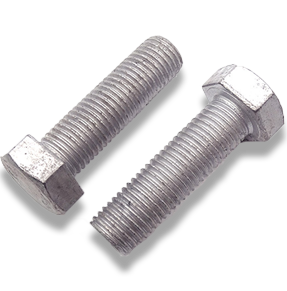

Stud Bolts and Nuts Essentials for Your Mechanical Fastening Needs
Aug . 19, 2024 05:36 Back to list
Stud Bolts and Nuts Essentials for Your Mechanical Fastening Needs
Understanding Stud Bolts and Nuts Essential Components in Engineering
Stud bolts and nuts are critical components in various engineering applications, particularly in construction, manufacturing, and heavy machinery. These fasteners are integral to creating secure, stable connections in assemblies that require reliable performance under stress. This article delves into the characteristics, applications, and significance of stud bolts and nuts in engineering.
What Are Stud Bolts?
Stud bolts are elongated fasteners that feature threads on both ends but are unthreaded in the middle. This design allows them to be inserted into pre-tapped holes, providing a reliable means of joining two components. The advantage of using stud bolts lies in their ability to withstand high levels of tension and shear, making them ideal for applications where strength is paramount. The main difference between standard bolts and stud bolts is that while traditional bolts have a head at one end, stud bolts come without a head, allowing them to be used in tighter spaces where a full bolt can't fit.
The Role of Nuts
Nuts, on the other hand, are fasteners that pair with bolts to secure items together. They typically possess internal threads that correspond to the external threads of the stud bolt. The combinations of stud bolts and nuts allow for creating strong joints that can hold significant weights and resist vibrations. Various types of nuts can be employed, including hex nuts, lock nuts, and flange nuts, each providing specific advantages depending on the application's requirements.
Material and Coatings
stud bolt & nut

The materials used for manufacturing stud bolts and nuts vary widely, including stainless steel, carbon steel, and alloy steel, each selected based on the mechanical and environmental conditions they must endure. For instance, stainless steel is highly resistant to corrosion, making it suitable for marine applications or environments prone to moisture. Additionally, coatings like zinc plating are often applied to improve corrosion resistance and enhance the fasteners' durability.
Applications of Stud Bolts and Nuts
Stud bolts and nuts are ubiquitous in numerous industries. In the construction sector, they are often used in the assembly of structural steel components, providing robust connections required to withstand loads and stresses. In the oil and gas industry, stud bolts play a crucial role in attaching flanges and valves, ensuring tight seals that prevent leaks. Similarly, in the automotive sector, they are crucial for securing engine components and chassis parts, contributing to vehicle safety and performance.
Importance of Proper Installation
While stud bolts and nuts are engineered to be strong, their effectiveness is highly dependent on proper installation. Following the correct torque specifications is essential to achieving the desired clamping force without overstressing the fasteners. Over-tightening can lead to bolt failure, while under-tightening can result in loosening during operation. Maintenance is also key; periodic inspections can identify any issues such as corrosion or wear that may compromise the integrity of the joints.
Conclusion
In summary, stud bolts and nuts are fundamental components in engineering that contribute to the reliability and safety of mechanical assemblies across various industries. Their ability to create strong, secure connections under demanding conditions cannot be overstated. Understanding their characteristics, applications, and proper handling is essential for engineers and technicians alike. As industries continue to evolve and grow, the importance of these fasteners will remain ever-present in ensuring the structural integrity and performance of engineered systems.
Latest news
-
High-Strength Hot Dip Galvanized Bolts - Hebei Longze | Corrosion Resistance, Customization
NewsJul.30,2025
-
Hot Dip Galvanized Bolts-Hebei Longze|Corrosion Resistance&High Strength
NewsJul.30,2025
-
High-Strength Hot-Dip Galvanized Bolts-Hebei Longze|Corrosion Resistance&High Strength
NewsJul.30,2025
-
Hot Dip Galvanized Bolts-Hebei Longze|Corrosion Resistance&High Strength
NewsJul.30,2025
-
Hot Dip Galvanized Bolts - Hebei Longze | Corrosion Resistance, High Strength
NewsJul.30,2025
-
High-Strength Hot Dip Galvanized Bolts-Hebei Longze|Corrosion Resistance, Grade 8.8
NewsJul.30,2025

